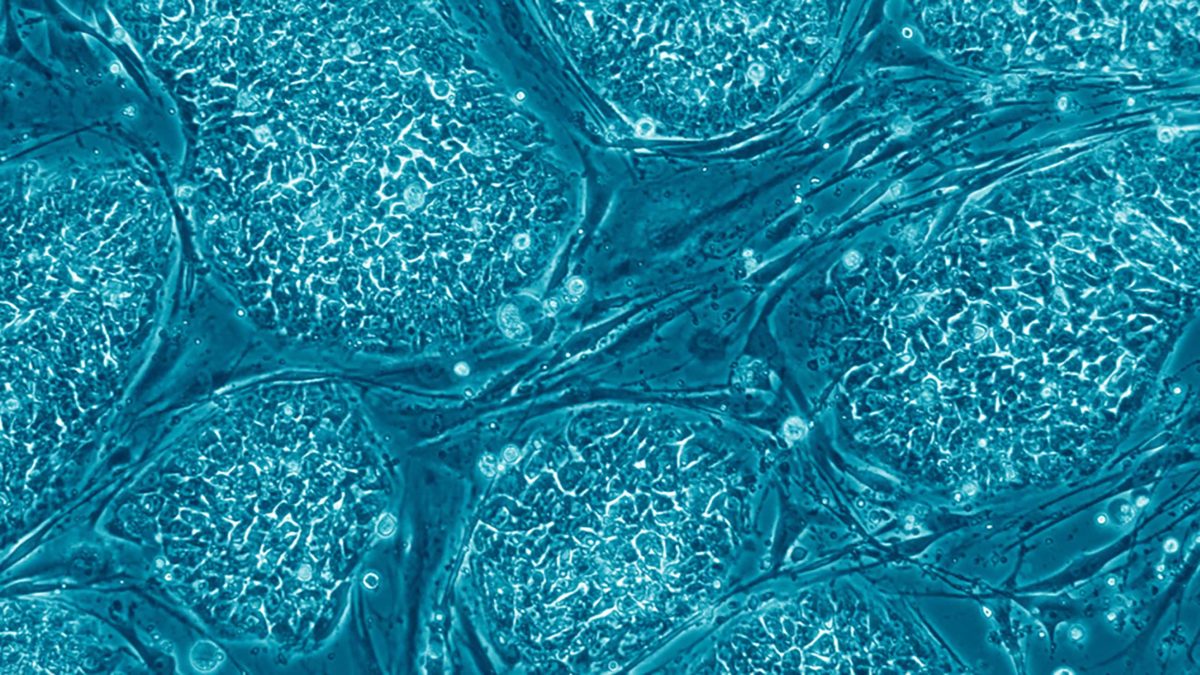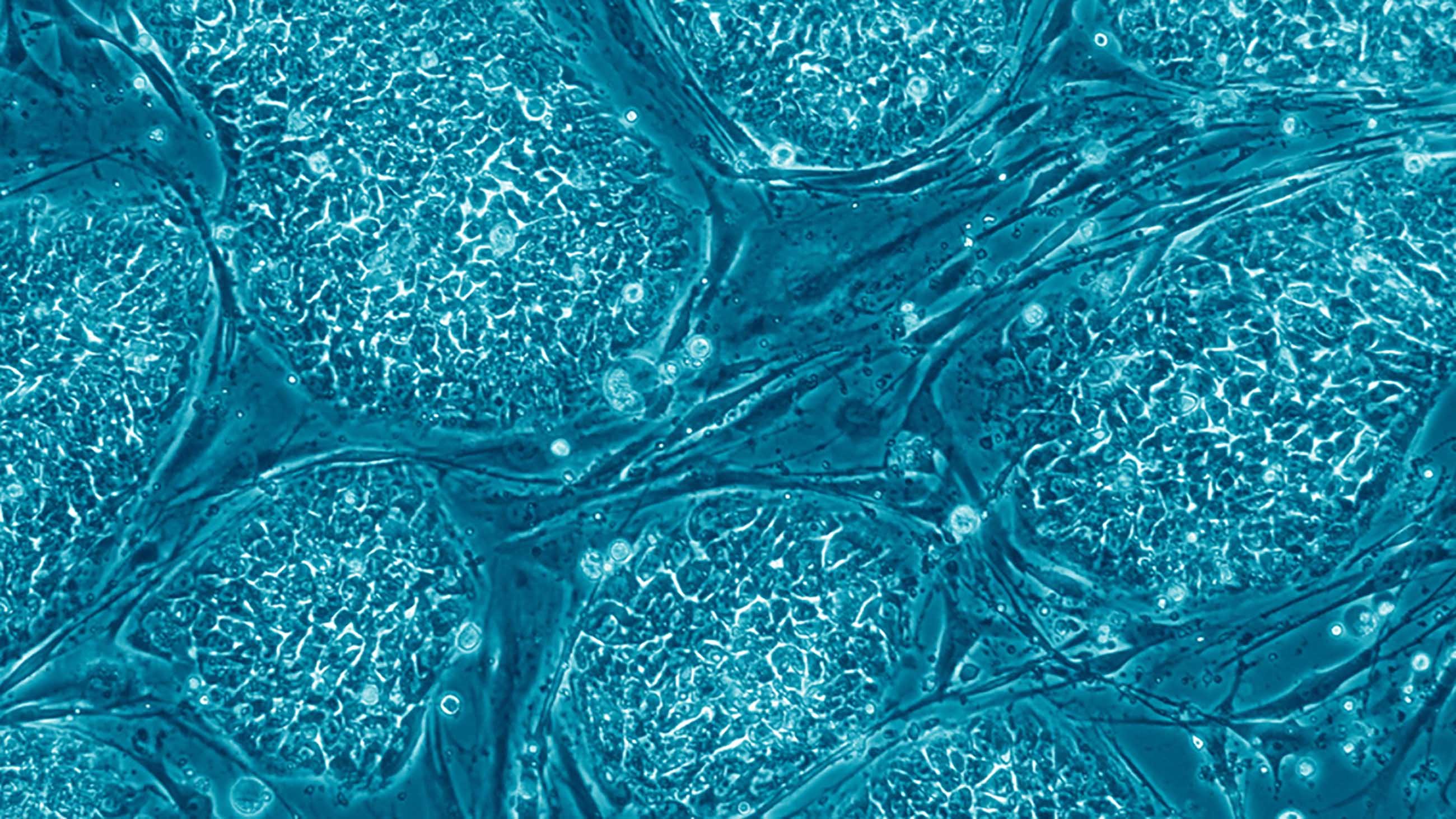The Return of Stem Cell Politics
Vice President-elect Mike Pence has many crusades under his belt. He has spearheaded efforts to slash funding for the reproductive nonprofit Planned Parenthood. He recently helped to pass a bill limiting women’s access to abortion in his home state of Indiana. And he is an avowed skeptic of evolution, favoring instead the biblical version of humanity’s creation.
So it shouldn’t be all that surprising that Pence is also staunchly opposed to using human embryonic stem cells for scientific research. The practice involves taking certain cells from developing embryos that have the potential to become any kind of cell in the human body. Scientists can coax these cells to differentiate and develop into replacement cells that, in theory, can have therapeutic ends.

Scientists worry that stem cell research, which was greatly curtailed under the last Bush administration, will again be hampered under Trump.
Visual: Nissim Benvenisty/CC
Although advances in this area have been painstakingly slow, scientists are adamant that stem cells have the potential to treat diseases like diabetes and Parkinson’s. Incremental progress has been made on macular degeneration, hearing loss, and spinal cord therapies.
Given this, the very prospect of federal funding cuts on this front has stem cell researchers worried. After all, many scientists have clear memories of the stem cell research funding moratorium implemented under former President George W. Bush.
“So much stem cell research has blossomed under the Obama administration after he lifted the prior administration’s restrictions,” said Millman, “which has resulted in several clinical trials that are ongoing. It would be a major disservice to the American people if we lost all of that.”
On August 9, 2001, President Bush went on national television to announce that, after careful thought and prayer, he’d decided that federal funding should be limited to the government’s existing embryonic stem cell lines, and that federal dollars would be banned from funding research on any new lines. (Embryonic stem cell lines are immortal cell cultures, derived from embryonic tissue, that can be grown in the laboratory indefinitely.)
“Research on embryonic stem cells raises profound ethical questions,” Bush said.
Lawmakers tried to undo the president’s restrictions and expand federal stem cell research, but Bush vetoed those proposals.
President Barack Obama reinstated the funding when he took office in 2009, through an executive order, but there is some good news for scientists facing the prospect of renewed restrictions under Trump and Pence. The earlier Bush-era moratorium forced researchers to create a robust network of alternatives and workarounds — including avenues of funding through private donors, pharmaceutical companies, and even individual states.
Universities across the country, including Harvard and Stanford, began opening privately-funded research institutes to circumvent federal restrictions. Biotechnology companies like the Geron Corporation took to funding scientists, too. And states like California, through its stem cell agency, the California Institute for Regenerative Medicine, or CIRM, also jumped into the game, passing laws allowing them to provide grants and resources for researchers.
Still, scientists say that private money was never enough to buoy the entire field of stem cell research.
“Philanthropy, private research, and even state funding such as we have with CIRM here in California are extremely important, but aren’t nearly enough to compensate these days for federal funding,” said Paul Knoepfler, a professor at the University of California at Davis, who recently wrote about the uncertainty Trump’s election has instilled among stem cell researchers. “We have a very worried U.S. stem cell field on many fronts.”
Millman, whose lab in St. Louis receives no private money at the moment, echoed that sentiment.
“The federal government is still the single largest funder of basic scientific research in the U.S.,” he said. “Ineligibility to apply to that source of funding is a major hit to any lab’s budget, and many if not most labs are not fortunate to have support from private funding.”
Millman adds that his own research, which looks into diabetes and how stem cells differentiate into insulin-producing pancreatic cells, may take a hit if a ban is reinstated.
“I feel particularly vulnerable,” he said, “as a new faculty member that just started my laboratory.”











Comments are automatically closed one year after article publication. Archived comments are below.
Thx Aleszu for the article.
It seems the long standing debate on what is scientifically ethical with regard embryonic science hasn’t abated as some thought it did as a result of iPS reprogramming technology. On the contrary in fact the advances in reverse engineering of cells and genetic editing technology has once again made the topic all the more poignant for societal discussion. This was the subject of an International Summit on Human Gene Editing and two related Consensus Committee meetings which your readers may be interested in (http://www.nationalacademies.org/gene-editing/index.htm).
I’ve attempted to address various issues on this complex subject on my blog >
Progress and the Circle of Scientific Medical Innovation: http://msemporda.blogspot.com/2016/02/progress-and-circle-of-scientific.html
Creation, Ensoulment, Birth & The Ethical Use of a Donated Cell: http://msemporda.blogspot.com/2014/10/creation-ensoulment-birth-ethical-use.html
Germline Science & Embryo Use – The Law & Scope for Applied Research: http://msemporda.blogspot.com/2015/05/germline-science-embryo-use-law-scope.html
Germline Editing using CRISPR-Cas9 – Totipotent Cell Research: http://msemporda.blogspot.com/2015/04/germline-editing-using-crispr-cas9.html
Cheers
Stop it. Quit soft pedaling the fact of evolution by comments such as the introductory paragraph which elevates the belief of creationism to the level of simple theory while at the same time devaluating evolution as a theory when it’s a fact.
You misstate and confuse the history of the policy and politics badly. The first five paragraphs track the erroneous narrative that Bush banned embryonic stem cell research, Obama ended the ban, Pence will take us back to a ban on funding.
Your 6th paragraph gets to the fact that Bush authorized federal funding for embryonic stem cell research for the first time, yet you only describe it as a limitation and a ban. The significance of Bush’s comments was not that he was limiting research or funding. It was totally the opposite: he was pushing against the longstanding opposition (opposition you take note of in the comments) by providing funding for the first time.
Bush sought to justify and balance this decision with the ethical concerns by funding only the existing lines. Obama later reiterated the ethical concerns voiced by Bush and they became part of the guidelines for any decision to authorize funding for additional stem cell lines. While this was an important delegation to the bureaucracy that opened up additional lines for funding, it was more an expansion of what Bush began than the ending of what is so often labeled a “ban.”
It’s similarly wrong when you write:
“President Barack Obama reinstated the funding when he took office in 2009, through an executive order, but there is some good news for scientists facing the prospect of renewed restrictions under Trump and Pence.”
Again, Obama did not “reinstate” funding — it never previously existed.
It is wrong too when you write:
“Universities across the country, including Harvard and Stanford, began opening privately-funded research institutes to circumvent federal restrictions.”
It is not a circumvention of a federal regulation to use your own money on something that is not illegal. That’s just called doing research with private funding.
It is possible that in the 7+ years since Pence wrote against Obama’s expansion of embryonic stem cell research funding his views have changed. Perhaps Pence feels that the bureaucracy has sufficiently guarded against ethical problems after all. Perhaps Pence feels it is still too ethically problematic and would seek to fund only the lines currently authorized (essentially go back to the Bush funding method, but not a ban). Maybe now he believes he has been vindicated about the results of embryonic stem cell research and still thinks federal funding is better served to fund adult stem cell research (commenter JeffB’s view).
There are legitimate ethical and budgetary considerations, along with the partisan political stuff (and the desire of scientists to get federal money). This is an important debate but I’m afraid it will remain a political circus. It is important to get the history right and to not downplay the legitimate concerns. Politics infects everything nowadays. We all need to guard against that.
FYI: The Dickey-Wicker Amendment, which prohibited the government from creating or destroying human embryo, was signed into law in 1996 by President William Jefferson Clinton. That’s some “Truth, Beauty, Science” that you seem willing to sweep under the rug.
Thanks William. Yes, federal opposition to stem cell research dates back more than three decades. We could have mentioned the NIH’s ethics board guidelines of 1979 and, of course, Dickey-Wicker in 1996, in addition to an explanation of the Bush and Obama executive orders. I chose to highlight only the most recent federal changes in terms of public tax dollars and embryonic stem cell research. You are correct – the Dickey-Wicker moratorium on federal money being used for creating or destroying embryos, which sped through the House and Senate in ’95 – remains unchanged and worth a deeper look in a longer story. Thanks for reading.
It appears you chose your content to promote your political views, and chose to ignore content that contradicts them. Nothing in your response dissuades me from thinking so.
If you are going to be honest. You should list the numerous cures obtained through adult stem cell therapies. Based on all these successes, the research dollars would be better served in adult stem cell research.
Thanks for the comment, Jeff. Adult stem cells indeed are used for treatments, the majority of which are based on stem cells isolated from blood. The federal budget for all stem cell treatments can be found here: https://report.nih.gov/categorical_spending.aspx